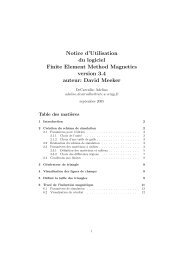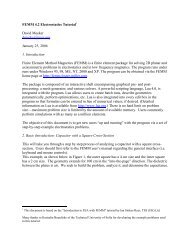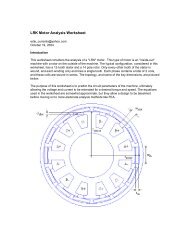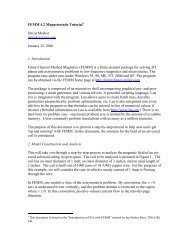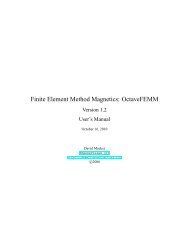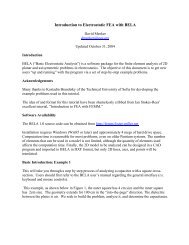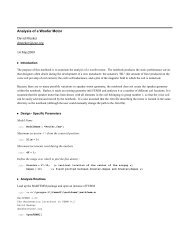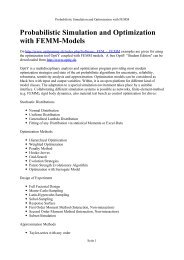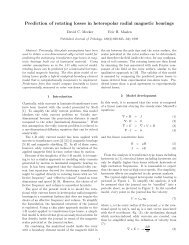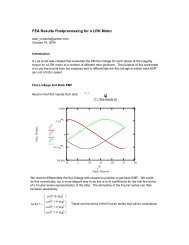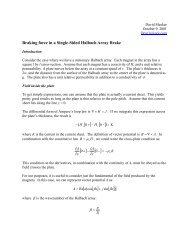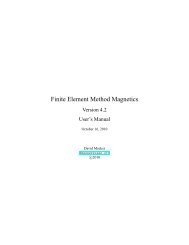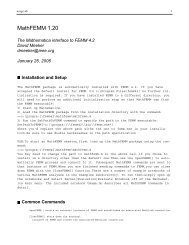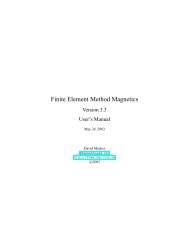1 Introduction - Finite Element Method Magnetics
1 Introduction - Finite Element Method Magnetics
1 Introduction - Finite Element Method Magnetics
Create successful ePaper yourself
Turn your PDF publications into a flip-book with our unique Google optimized e-Paper software.
Figure 27: Input geometry in the region of the air gap.<br />
Figure 28: Solution with integration contour defined in the region of the air gap.<br />
5.12 Exporting of Graphics<br />
Ultimately, you will probably want to export graphics from FEMM for inclusion in reports and so<br />
on. It is possible to get what you are seeing on the screen onto disk in several different graphics<br />
formats.<br />
Probably the easiest way to get graphics out of femmview is to use the Copy as Bitmap or<br />
Copy as Metafile selections off of the main menu’s Edit list. These command takes whatever is<br />
currently in the femmview window and copies it to the clipboard as a Device Independent Bitmap<br />
(.bmp format) and Extended Metafile (.emf format), respectively. The clipboard data can then be<br />
pasted directly into most applications (e.g. Word, MS Paint, etc).<br />
LATEXafficionados typically find PostScript to be the most useful type of graphics output.<br />
FEMM does not support postscript output directly, but it is still relatively easy to create postcript<br />
figures with FEMM. To obtain a postscript version of the current view, you first must set up a<br />
postscript printer driver that outputs to File:. This is done via the following steps:<br />
1. Choose Settings/Printers off of the Windows Start menu. A window containing the list<br />
of currently defined printers will appear.<br />
42



